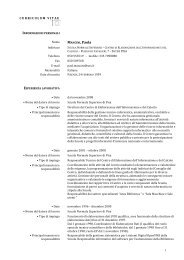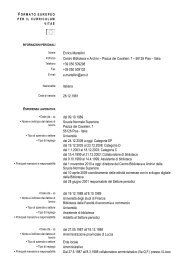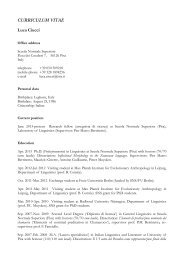Metrics of curves in shape optimization and analysis - Andrea Carlo ...
Metrics of curves in shape optimization and analysis - Andrea Carlo ...
Metrics of curves in shape optimization and analysis - Andrea Carlo ...
Create successful ePaper yourself
Turn your PDF publications into a flip-book with our unique Google optimized e-Paper software.
2.4.1 Example: geometric heat flowWe first review one <strong>of</strong> the most mathematically studied gradient descent flows <strong>of</strong><strong>curves</strong>. By direct computation, the Gâteaux differential <strong>of</strong> the length <strong>of</strong> a closedcurve is∫∫D len(c; h) = ∂ s h · T ds = − h · H ds (2.5)cLet C = C(t, θ) be an evolv<strong>in</strong>g family <strong>of</strong> <strong>curves</strong>. The geometric heat flow(also known as motion by mean curvature) is∂C∂t = Hwhere H := ∂ s ∂ s C is the mean curvature. In the H 0 <strong>in</strong>ner-product, this flow isthe gradient descent for curve length. 5This flow has been studied deeply by the mathematical community, <strong>and</strong> isknown to enjoy the follow<strong>in</strong>g properties.Properties 2.7• Embedded planar <strong>curves</strong> rema<strong>in</strong> embedded.• Embedded planar <strong>curves</strong> converge to a circular po<strong>in</strong>t.• Comparison pr<strong>in</strong>ciple: if two embedded <strong>curves</strong> are used as <strong>in</strong>itialization,<strong>and</strong> the first conta<strong>in</strong>s the second, then it will conta<strong>in</strong> the second for alltime <strong>of</strong> evolution. This is important for level set methods.• The flow is well posed only for positive times, that is, for <strong>in</strong>creas<strong>in</strong>g t(similarly to the usual heat equation).For the pro<strong>of</strong>s, see Gage <strong>and</strong> Hamilton [21], Grayson [23].2.4.2 Short length biasThe usual edge-based active contour energy is <strong>of</strong> the form∫E(c) = g(c(s)) dscsuppos<strong>in</strong>g that g is reasonably constant <strong>in</strong> the region where c is runn<strong>in</strong>g, thenE(c) ≃ g len(c), due to the <strong>in</strong>tegral be<strong>in</strong>g performed w.r.to the arc parameter ds.So one way to reduce E is to shr<strong>in</strong>k the curve. Consequently, when the image issmooth <strong>and</strong> featureless (as <strong>in</strong> medical imag<strong>in</strong>g), the usual edge based energieswould <strong>of</strong>ten drive the curve to a po<strong>in</strong>t.To avoid it, an <strong>in</strong>flationary term νN (with ν > 0) was usually added tothe curve evolution, to obta<strong>in</strong>∂c= φκN − ∇φ + νN ,∂tsee [7, 27]. Unfortunately, this adds a parameter that has to be tuned to matchthe characteristics <strong>of</strong> each specific image.5 A different gradient descent flow for curve length will be discussed <strong>in</strong> Remark 10.32.c15




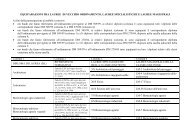
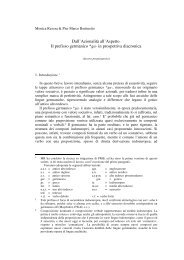
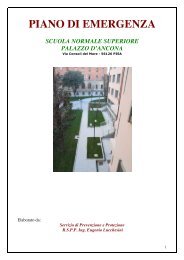
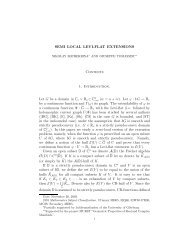
![4. Ghost [Å] vowels in French - Laboratorio di Linguistica](https://img.yumpu.com/49999334/1/184x260/4-ghost-a-vowels-in-french-laboratorio-di-linguistica.jpg?quality=85)



